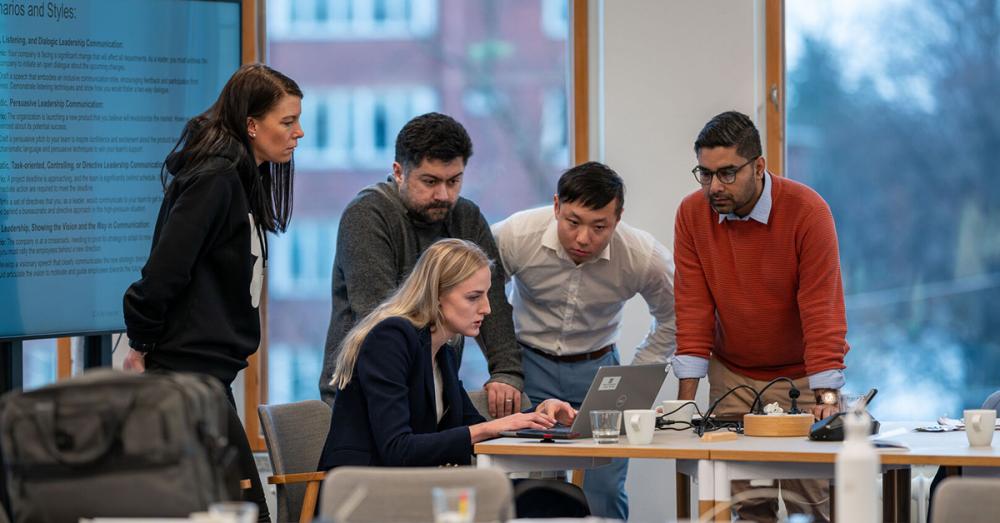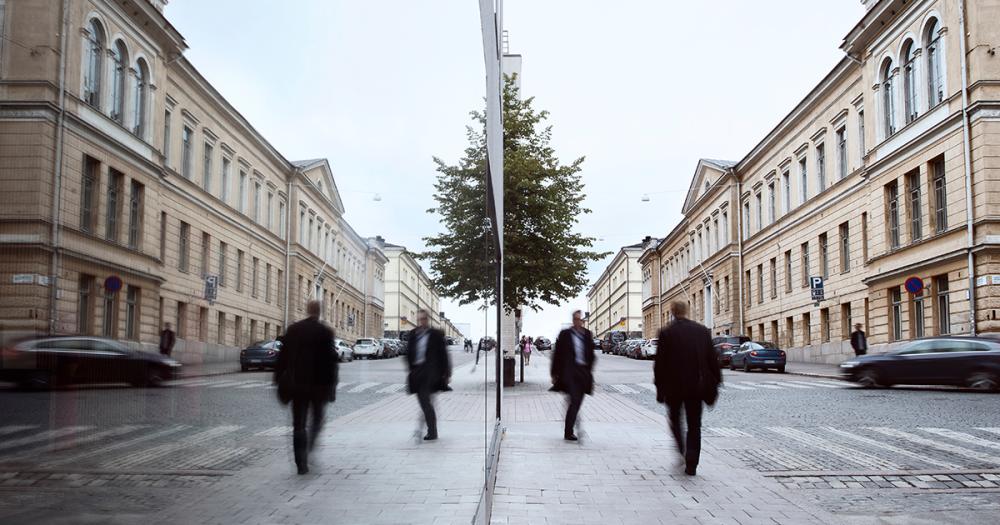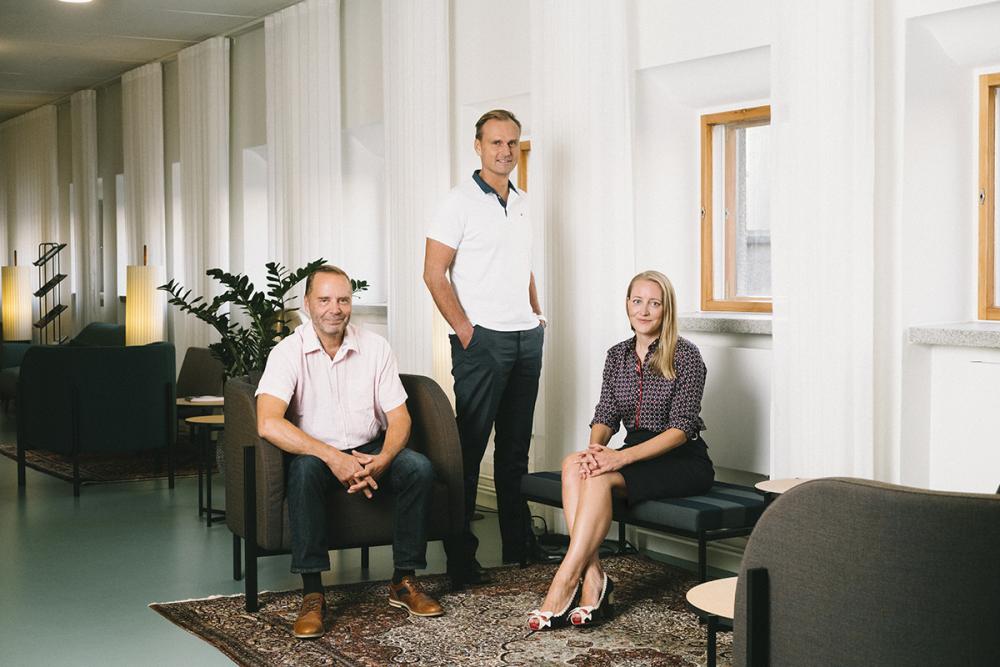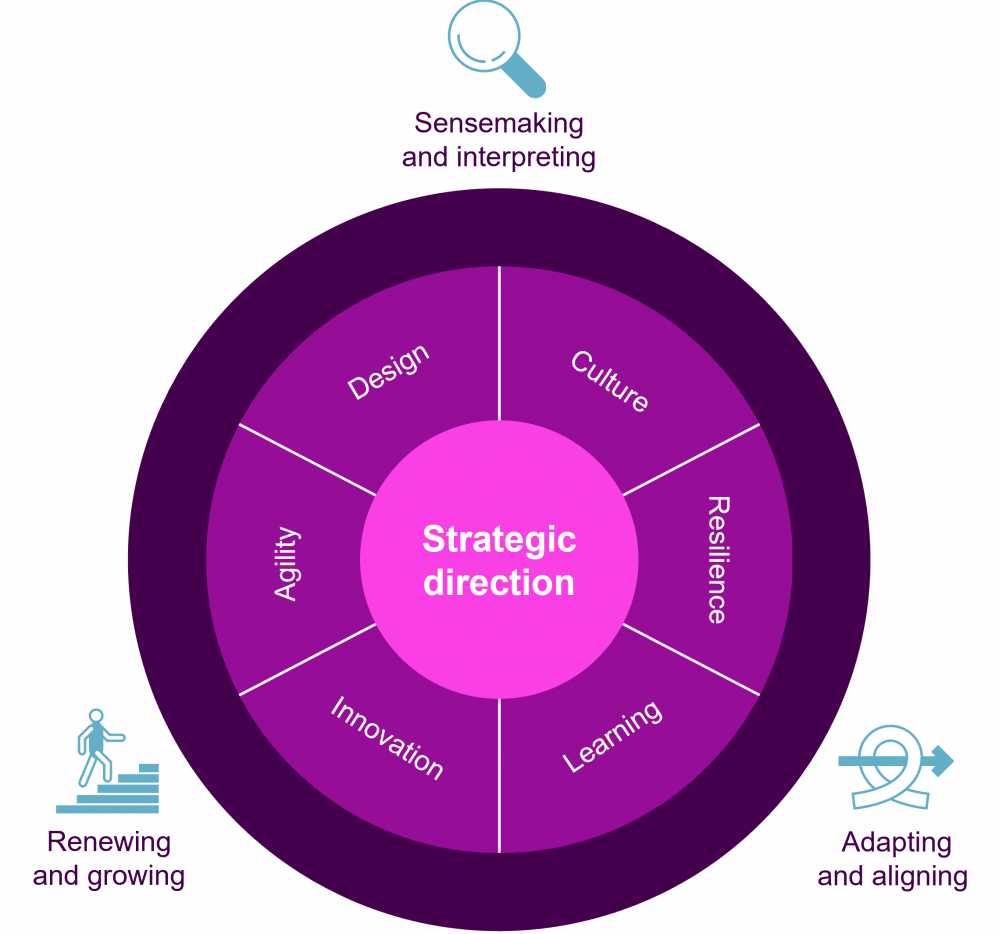Even the best leader will not succeed without the structures and collective abilities of the organization supporting that success. On the other hand, excellent leadership is a prerequisite for a successful organization. The focus of the framework’s different areas depends on the situation and context. The essence is that the leader and organization head in the same direction.
Impactful leadership is a combination of three factors
Sometimes the expectations placed on leaders do not seem human-scaled. The focus is on their execution and renewal skills on the one hand, and cognitive skills and thinking on the other. They are expected to demonstrate macro and micromanagement, complex thinking and straightforward decision-making, strategic understanding, and people management.
A more comprehensive leadership approach ties all these elements together without forgetting that even the best leader operates within a certain context. Good leadership builds organizational capabilities, whereas even the best leaders will be waving their hands in the air if the organization’s structures and other collective factors fail to support success.
A leader needs to make a practical contribution to ensure the organization succeeds in implementing the chosen direction, also in situations when a quick turnaround is necessary. Excellent leaders make a long-lasting imprint on the organization’s performance, culture, and strategic goals.
The knowledge, skills, and competencies of an effective leader boil down to three simple points:
1. Sensemaking and Interpreting. This describes the way we make sense of the complex world around us – our mental models and thoughts – including our detrimental beliefs. A key skill of a leader is to break down information and use it as an aid for decision-making. At best, leaders are able to grasp and hold two opposing ideas at the same time. Leaders are also interpreters: they express matters to their teams and other networks. They understand that we always see the world through a certain lens. The leader’s task is to ask: What is happening? What will happen? Which beliefs will influence the events? It is necessary to understand and accept that the answers will never be perfect.
Yet, this imperfection cannot paralyze decision-making and execution. The second point, 2. Adapting and Aligning, refer to a leader’s ability to adapt activities to the surrounding reality as it is interpreted: the company strategy, context, and events on both a micro and macro level. Which measures support the organization? How to steer operations in the right direction? How to align a team’s activities to support the company’s goals? On an individual level, it means that leaders who are aware of their behavioral styles and ways of making sense of the world can use that knowledge to adapt to the situation.
The third leadership skill is 3. Renewing and Growing. This means both the leader’s personal renewal and the leader’s impact on organizational renewal and growth. It may require challenging both the leader’s own and the organization’s mindsets. Adapting and Aligning involve continual development, whereas Renewing and Growing refer to a leader’s ability to respond to sporadic, surprising changes in the operating environment. It can mean dramatic changes to the way the leader is used to doing things.
Six factors help examine the capabilities of an organization
By strengthening these knowledge, skills and individual competences, leaders can become more effective and leave their mark – on the team, organization, and surrounding society. It is important to pay attention to the context of leadership, though.
Leadership never takes place in a vacuum; the organizational and wider context exist along the perimeters of leadership. Even the most skilled leader is unable to leave a positive imprint without structures and frameworks that support leadership. The collective capabilities, knowledge, and skills of the organization set the conditions for a leader’s activities.
Even the most skilled leader is unable to leave a positive imprint without structures and frameworks that support leadership."
The three personal leadership factors are surrounded by six collective organizational factors.
Design refers to different ways of framing the organization and its business and operating methods. Organizational design creates structures, processes, roles, and for example rewarding systems. It sets the framework for the work of individual leaders: how they are rewarded or reward others, how much responsibility they have, how self-directing they are expected to be.
Culture appears as a collection of manifested organizational values and norms. An organization’s culture or numerous microcultures often resemble their leaders. People are usually the children of their cultures. When it comes to the compatibility of values and culture, the same is true for individual leaders within an organization.
Resilience is a term that organizational scholars originally borrowed from psychology. It is much more than flexibility. In an organization, resilience means collective persistence. In a resilient organization, the direction and goal are clear and decision-making consistent even in moments of crisis.
The classic meaning of learning refers to an organization collectively collecting and sharing information. Learning primarily refers to people, but on an organizational level, learning also takes place in systems and documents that share collective organizational knowledge.
Innovation is an organization’s hunger for renewal as well as the ability to take hold of surrounding signals and use them to create new business. It also refers to an organization’s ability for high-quality decision-making on where growth is sought and how to go about it in an effective and profitable way.
And finally: agility. At the risk of the term being somewhat overused, it describes an organization’s situational awareness in a unique way. Agility is the ability to change direction and thought patterns quickly, if need be, and react to what goes on in the surrounding world. Agility is of course also part of culture, and organizational design and structures enable it.
These six collective organizational factors connect the implementation of a company’s strategic direction with the competence and skills of an individual leader. They glue the abilities of an individual leader to the goal of the organization.
Whether leadership development focuses on the skills of an individual leader or the organization’s strategic direction depends on the chosen perspective. Leaders develop their personal skills– and the organization its capabilities. The main thing is for the direction to be the same: after all, what meaning does a leader’s imprint ultimately have if it doesn’t lead anywhere.






















